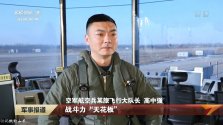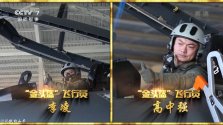J-20 stealth fighter jets of the Chinese People's Liberation Army (PLA) Air Force recently conducted a nocturnal battle exercise against other types of warplanes with experts saying on Sunday that the stealthy J-20 demonstrated its all-time and all-weather combat readiness.
During the recent, undated aerial confrontational exercise that was organized in an undisclosed training base of the PLA Air Force, several J-20 stealth fighter jets took off under the curtain of night and started the combat drill against the simulated enemy after entering a designated area, China Central Television (CCTV) reported on Sunday.
The report indicates that the J-20s did not carry Luneburg lenses, which are radar reflectors used to make a stealth aircraft visible to others in training or non-combat flights. CCTV showed some images of the J-16 heavy fighter jet taking part in the exercise.
In addition to air-to-air combat, other realistic combat-oriented courses, including attack on ground targets and electronic warfare, were also carried out, according to the report.
, the J-20s also held similar combat exercises against other types of aircrafts, including J-16s and J-11Bs, according to media reports.
At nighttime, pilots can get confused and might not be able to tell if they are flying up, down or if they are rolling. For this reason, pilots must pay more attention while flying the aircraft at night than during the day, Cheng Xia, a J-20 pilot who participated in the latest exercise, told CCTV.
By holding combat drills at night, the J-20 displayed its highly reliable all-weather combat readiness and capability, Wei Dongxu, a Beijing-based military expert, told the Global Times on Sunday.
"In recent air combat exercises, the J-20 took advantages of its stealth and attack capabilities and realized the tactical goals of finding the enemy first, firing missiles first, breaking away from combat first and destroying the target first," Chen said.
However, warplanes on the other team were also able to spot opponents with their radars and launched missiles, forcing their adversaries to make high G evasive maneuvers, according to the CCTV report.
Wei said that the combat drills helped the J-20 hone its stealth capabilities in hunting down non-stealth aircrafts. At the same time, non-stealth aircrafts were forced to find ways to counter stealth aircraft like the J-20.
While CCTV did not specify how the two teams were formed, it is possible that the J-20s fought against other types of warplanes as well as other J-20s, Wei said.
The J-20 could be used to penetrate hostile defenses and seize air superiority, and other types of non-stealth aircraft could be used to unload a large amount of munitions on targets, Wei explained.
The growing media reports on the training and exercises of the J-20 also indicate that more of these aircrafts are being commissioned to the PLA Air Force, observers said.


